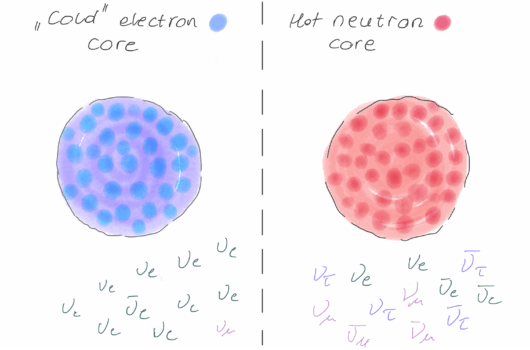Successful νp-process in neutrino-driven outflows in core-collapse supernovae
Successful νp-process in neutrino-driven outflows in core-collapse supernovae
View
Abstract
The origin of the solar system abundances of several proton-rich isotopes, especially ![]() Mo and
Mo and ![]() Ru, has been an enduring mystery in nuclear astrophysics. An attractive proposal to solve this problem is the
Ru, has been an enduring mystery in nuclear astrophysics. An attractive proposal to solve this problem is the ![]() -process, which can operate in neutrino-driven outflows in a core-collapse supernova after the shock is launched. Years of detailed studies, however, have cast doubt over the ability of this process to generate sufficiently high absolute and relative amounts of various
-process, which can operate in neutrino-driven outflows in a core-collapse supernova after the shock is launched. Years of detailed studies, however, have cast doubt over the ability of this process to generate sufficiently high absolute and relative amounts of various ![]() -nuclei. The
-nuclei. The ![]() -process is also thought to be excluded by arguments based on the long-lived radionuclide
-process is also thought to be excluded by arguments based on the long-lived radionuclide ![]() Nb. Here, we present explicit calculations, in which both the abundance ratios and the absolute yields of the
Nb. Here, we present explicit calculations, in which both the abundance ratios and the absolute yields of the ![]() -nuclei up to
-nuclei up to ![]() are successfully reproduced, even when using the modern (medium enhanced) triple-
are successfully reproduced, even when using the modern (medium enhanced) triple-![]() reaction rates. The process is also shown to produce the necessary amounts of
reaction rates. The process is also shown to produce the necessary amounts of ![]() Nb. The models are characterized by subsonic outflows and by the protoneutron star masses in the {
Nb. The models are characterized by subsonic outflows and by the protoneutron star masses in the {![]() range}. This suggests that the Mo and Ru
range}. This suggests that the Mo and Ru ![]() -nuclides observed in the Solar System were made in CCSN explosions characterized by an extended accretion stage.
-nuclides observed in the Solar System were made in CCSN explosions characterized by an extended accretion stage.





